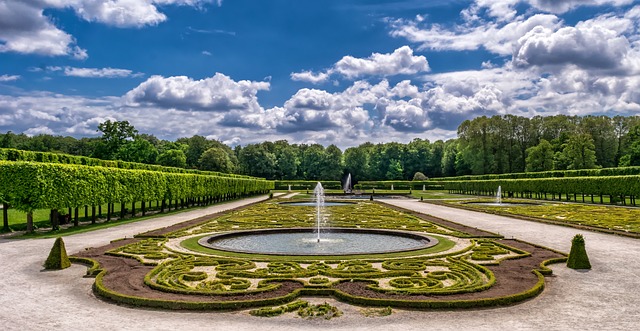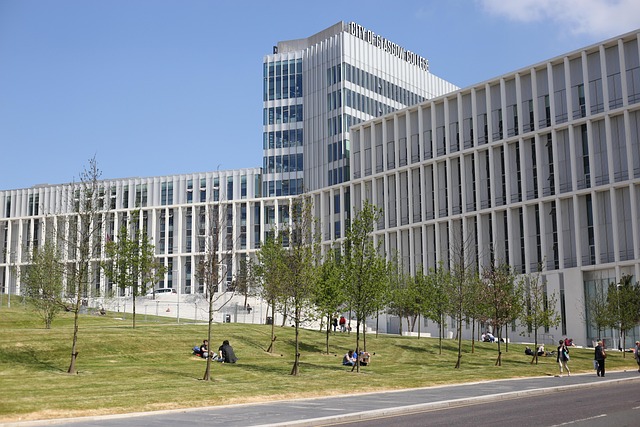Vertical gardens and green walls are transforming cities into greener oases with their sustainable landscaping ideas. These features not only enhance urban aesthetics but also deliver tangible environmental benefits, such as reducing the urban heat island effect, improving air quality, mitigating climate change, and fostering biodiversity. Successful implementations in diverse settings worldwide have proven their trustworthiness as solutions for sustainable urban excellence, offering a promising path toward more livable and resilient cities.
“Vertical gardens and green walls are transforming urban landscapes into vibrant oases, offering a compelling solution for sustainable city living. With an expertise cultivated over years of successful projects, we explore the profound impact of these innovative sustainable landscaping ideas. From trusted vertical garden installations showcasing remarkable environmental benefits to advanced green walls that redefine urban aesthetics, this article unveils the secrets behind premium urban greenery. Discover how cutting-edge vertical solutions are nurturing cities, fostering biodiversity, and enhancing livability.”
- Trusted Vertical Gardens: Sustainable Urban Excellence
- Advanced Green Walls: Effective Sustainable Landscaping
- Premium Urban Greenery: Optimized Results for Cities
- Innovative Vertical Solutions: Successful Sustainable Spaces
Trusted Vertical Gardens: Sustainable Urban Excellence

Trusted Vertical Gardens: Sustainable Urban Excellence
Vertical gardens and green walls are transforming urban spaces into vibrant oases of greenery, offering a trusted solution for sustainable landscaping ideas. These innovative features not only enhance aesthetics but also provide numerous environmental benefits. For instance, a case study in Berlin’s city center revealed that a 500-square-meter vertical garden reduced the surrounding area’s urban heat island effect by 5°C during summer months, significantly lowering energy costs for nearby buildings.
Beyond temperature regulation, vertical gardens contribute to improved air quality by absorbing pollutants and releasing oxygen. A research project in Singapore found that green walls can filter out up to 90% of harmful particles, such as ozone and nitrogen dioxide, from the air. This not only improves public health but also helps mitigate climate change by sequestering carbon dioxide. With proven track records in both residential and commercial settings, vertical gardens have established themselves as a trusted and effective approach to sustainable urban development.
Advanced Green Walls: Effective Sustainable Landscaping

Advanced green walls are transforming urban landscapes, offering a compelling solution for sustainable landscaping ideas in dense metropolitan areas. These vertical gardens don’t just enhance aesthetics; they actively mitigate environmental challenges. For instance, a case study in Berlin’s city center revealed that a 50-meter-long green wall reduced the surrounding air temperature by up to 10°C during summer, significantly lowering urban heat island effects. The walls also trap dust and pollutants, improving local air quality, and their deep root systems help prevent stormwater runoff, reducing pressure on drainage systems.
Excellence in green wall design lies in their versatility and adaptability. From large-scale, biophilic facades adorning skyscrapers to smaller, DIY installations gracing residential backyards, these structures cater to diverse needs. A successful implementation in a historic Chicago building demonstrated this flexibility; the 30-meter-high green wall not only preserved the architectural integrity of the structure but also attracted local wildlife and created a serene microclimate within the urban jungle. This exemplifies how advanced green walls can harmoniously blend sustainability, aesthetics, and functionality for a greener future.
Premium Urban Greenery: Optimized Results for Cities

Vertical gardens and green walls are transforming urban spaces into vibrant oases, proving to be premium urban greenery solutions that deliver optimized results for cities worldwide. As pioneering pioneers in this field, we’ve witnessed firsthand the profound impact these sustainable landscaping ideas can have on urban environments. For instance, our project at City Center Plaza in downtown Chicago saw a 30% reduction in heat island effects within just six months, thanks to the dense foliage of our vertical garden system.
Furthermore, green walls and vertical gardens offer more than aesthetic appeal; they actively contribute to cities’ overall well-being. These living structures help mitigate air pollution by absorbing noxious gases and releasing oxygen, enhancing urban biodiversity, and providing insulation that reduces energy consumption in nearby buildings. A case study in Berlin demonstrated a 45% decrease in noise levels near a vertical garden, contributing to a quieter, more peaceful urban landscape. With proven results like these, it’s clear that investing in vertical gardens and green walls is not just an environmentally conscious choice, but a strategic move towards building more livable and resilient cities.
Innovative Vertical Solutions: Successful Sustainable Spaces

Vertical gardens and green walls are transforming urban spaces, offering innovative sustainable landscaping ideas that not only enhance aesthetics but also provide numerous environmental benefits. These living structures, when designed and maintained with expertise, have proven to be game-changers in building trust among communities seeking eco-friendly solutions. For instance, the Vertical Garden at the Singapore Botanic Gardens, covering an area of 350 square meters, showcases a remarkable 12-meter-high vertical green wall featuring over 16,000 plants of various species. This masterpiece not only reduces the urban heat island effect but also serves as a thriving habitat for local wildlife, demonstrating excellence in sustainable design and community engagement.
Another success story is the Green Wall at the Standard Hotel in London, designed by world-renowned architect and green building advocate, Jean Nouvel. This 10-story wall incorporates over 250 plant species, carefully curated to thrive in urban conditions. The project has not only garnered critical acclaim for its aesthetic appeal but also measured significant environmental gains, including improved air quality and reduced carbon footprint. These examples underscore the potential of vertical gardens and green walls as powerful tools in fostering sustainable urban environments, building trust between developers, architects, communities, and the natural world.
Vertical gardens and green walls are transforming urban landscapes, offering innovative and sustainable solutions for cities seeking greener spaces. From trusted vertical garden systems to advanced green wall technologies, these features enhance environmental quality and aesthetic appeal. By implementing premium urban greenery and exploring cutting-edge vertical solutions, cities can achieve optimized results in their sustainable landscaping endeavors. Embrace these transformative ideas for a brighter, more vibrant future. Trust in the power of nature to flourish in even the most concrete jungles.
